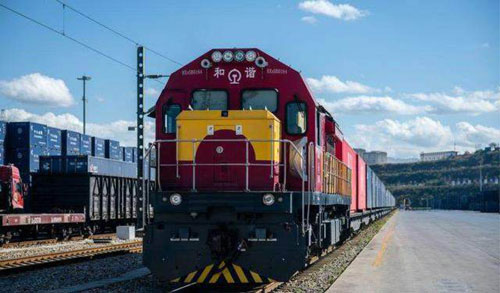On Dec 3, 2021, the China-Laos railway opened to traffic, connecting Kunming in southwest China’s Yunnan province with Lao capital Vientiane.
The railway is a landmark project of China’s Belt and Road Initiative. In addition to the extreme construc-tion difficulty and risks of the project, what is less known is that the construction team also faced a deadly threat in the construction process — a large number of unexploded ordnance (UXO) left by the United States during the Vietnam War are buried along the railway.
Laos, a close neighbour of China, is the only inland country of Southeast Asia, with mountains and plateaus covering 80 percent of its 236,000 square kilometers. Before the completion of the China-Laos railway, Laos only had 3.5 kilometres of railways, ranking fourth from the bottom among the 146 countries in the world with railways. It was known as a “landlocked country” for its backward transport system.
The “lock” has not only restricted the Lao peo-ple’s access to and from the outside, but also re-stricted the pace of economic development in Laos. The China-Laos railway is therefore of great signifi-cance, the win-win cooperation brought about by the Belt and Road initiative will be an opportunity to help the Lao people achieve a better life.
The China-Laos railway is the first international railway to be built with Chinese investment, adopt Chinese technical standards, use Chinese equipment and connect directly with China’s railway net-work.The project took five years, during which countless hardships were experienced. Not to men-tion the long negotiation process, the project itself also had extremely rare difficulties and risks, such as poor meteorological and geological conditions, high environmental protection requirements, and even access to no man’s land…
But what scared the workers the most was the deadly threat that they faced: a large amount of UXO from US carpet bombing during the Vietnam War, which Laos was embroiled in. In order to block the Ho Chi Minh Trail, the supply route to the north Vietnamese forces, the United States covertly extended the battlefield into Laos at the instigation of the CIA, flying 580,000 bombing missions be-tween 1964 and 1973, dropping more than two mil-lion tons of bombs (or 270 million bombs), with most being the dreaded cluster bombs.
Within nine years, 270 million bombs in total weighing 2 million tons were dropped on Laos, equaling eight bombs per minute on average. The total number of bombs is more than that dropped during World War II.
At the time, Laos had a population of about two million people, giving each Laotian a ton of bombs, making it “the most heavily bombed country per capita in human history.”
Although the Vietnam War eventually ended, the Lao people are still living in its nightmare of destruction. According to CBS, about 80 million dropped bombs did not explode, which is 30% of the total.
For decades, these unexploded bombs have been a threat to the lives of the Lao people. Some parts of the land in Laos cannot be cultivated because of the bomb threat, and the country’s national construction and economic development have been seriously affected. From 1975 to 2008, more than 50,000 Laotians, many of them children, were killed by unexploded bombs, according to the government statistics.
Ironically, the entire amount the US spent on clearing unexploded bombs in Laos between 1995 and 2013 was only equivalent to the cost of three days of bombing during the Vietnam War. When then US President Barack Obama visited Laos in 2016, he promised an additional $90 million for clearing unexploded bombs, but did not apologize for the bombing.
In recent years, with the help from all sectors of society, the number of Lao people killed by unex-ploded bombs has been reduced to dozens from thousands a year at the end of the war, but those bombs are still a huge hazard.
According to Vientiane Times, during the 25 years between 1996 and 2020, Bomb disposal teams in Laos destroyed more than 1.6 million unexploded ordnance on 70,000 hectares of land, including more than 4,200 large bombs. It could take as long as 50 years or even a century to completely remove them. And just at the end of 2021, three bomb disposal workers were killed in explosions.
As the bomb disposal teams have to probe inch by inch, while also protect the land for cultivation, it takes more than two months to probe one acre (0.4 hectares) of land. Due to the low efficiency and high cost, bomb removal in Laos has been slow.
Although the Mordin–Vientiane section of the China-Laos railway is located in the north-western area where there is less UXO, the density of bombs there is still alarming.
According to Lao State News Agency (KPL) in December 2016, a 16.9 km long area with UXO was found at the Nateuy station of the China-Laos rail-way. The Lao Ministry of National Defence informed the provincial government of Luang Namtha that there was still UXO in one of the three villages that the railway was to pass through. The bombs were found in the village of Natu, and the Chinese con-struction company, which had finished 70% of the survey work, had to stop pending bomb clearance.










